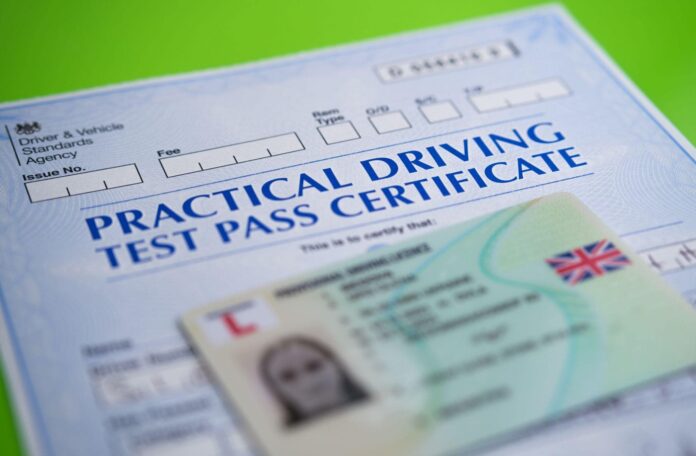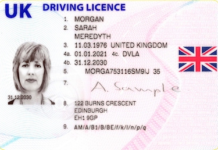Learner drivers have been told the top 10 most common reasons for failing the driving test as more than half slip up on simple mistakes.
Road safety experts at Road Angel have analysed government research to uncover the main reasons British motorists fail their driving test.
With pass rates at less than 50%, learners would benefit from focussing on the most common reasons for failing to better their chances of success.
While many of these errors might be considered obvious to both novice and experienced drivers alike it is surprising how many learner drivers fall foul of them.
Fortunately, many of these skills are easy to master – like checking mirrors more often and driving in the middle of the lane.
But some of the other common mistakes made by learner drivers might take a little longer to grasp – such as reverse bay parking and hill starts.
If learners are making these common mistakes during lessons, they will be unlikely to pass and need more practice to be safe on the roads.
Other common mistakes for failure include incorrectly responding to traffic lights and signs, bad observations, and wrong positioning when turning right.
Gary Digva, founder of Road Angel said: “It can be easy to make a mistake on the day of your driving test which can cause you to fail.
“Some of these common errors may be considered obvious but under the pressure of a driving test, it’s easy for even the best learners to make one of these 10 mistakes.
“Getting in as much practice as possible beforehand will improve your driving skills and confidence behind the wheel, which will help control test day nerves and avoid making these common errors.
“And if you’re regularly making these mistakes during your driving lessons your instructor will most likely recommend you not to take your test yet as you’re not quite ready.
“Although it can be upsetting to hear that you’ve failed your driving test, it just means you need a bit more practice to be fully safe on the roads.”
Road Angel‘s top 10 reasons why learners fail their driving test:
- Not checking mirrors enough
Learners won’t pass their test if they don’t check their mirrors often enough – particularly before signalling changing speed or direction. Mirrors must be checked along roundabouts and when changing lanes – especially on the dual carriageway to avoid other cars from having to slow down.
- Bad observations at junctions
Not making effective observations left and right when learners are approaching junctions is one of the most common reasons why pupils fail their driving test. Every time the car enters a new road the driver must ensure it is safe to proceed. This also applies when entering a roundabout, slip road and looking ahead at crossroads.
- Poor road positioning
Throughout the test learners often fail for having poor road positioning during normal driving. This includes using the right-hand lane unnecessarily with no attempt to move over to the left and not driving in the middle of the road.
- Failing to move off safely
Any time a learner driver moves off, they must do a six-point check to ensure it is completely safe to continue. Along with checking their mirrors, pupils must ensure to effectively check their blind spots, indicate if necessary, and not enter into the path of any approaching vehicles.
- Incorrectly responding to traffic lights
Learner drivers will fail if they don’t respond correctly to traffic lights – one of the most common reasons is from ignoring or not anticipating a red light and thus attempting to proceed through it. Pupils could also fail from entering the box reserved for cyclists and blocking traffic when waiting to turn right at the repeater lights.
- Incorrectly responding to road signs
Learners must understand and quickly react to all traffic signs when driving, or else risk failing their test. Some of the most common signs that learners do not respond to are ignoring ‘stop’ or ‘no entry’ signs, speed limit changes and incorrectly driving in bus lanes when the time is displayed.
- Wrong positioning when turning right
Some learner drivers fail to position the car as close to the centre of the road as is safely possible. If the car is positioned too far to the left when turning right, traffic may be obstructed causing delays. This also includes incorrectly positioning in the left-hand lane on a roundabout when wanting to turn right, causing confusion to other drivers.
- Not having control of the car when moving off
Hill starts are one of the most common reasons for learners to fail their driving test. Rolling back on a hill shows that the learner doesn’t have full control of the car. Repeatedly stalling or not selecting a gear when moving off are also common reasons for failing.
- Lack of control when steering
Not having full and proper control of the car when steering is one of the common reasons for failing the driving test. Some steering issues include not steering enough around a bend, steering too late when turning into a minor road and mounting the pavement when pulling up on the left or parking.
- Failing to have control when reverse parking
Many learners will be asked to parallel park or reverse into a bay during their driving test, however, this is a common failure point for pupils. Popular reasons for failing include losing control of the car when attempting a reverse bay park, or ending up outside of the bay lines. Another reason for failure is often also taking too many attempts to park or ending up with the wheels on the pavement.
Help keep news FREE for our readers
Supporting your local community newspaper/online news outlet is crucial now more than ever. If you believe in independent journalism, then consider making a valuable contribution by making a one-time or monthly donation. We operate in rural areas where providing unbiased news can be challenging. Read More About Supporting The West Wales Chronicle
























